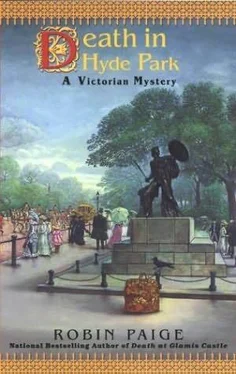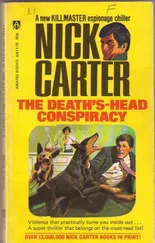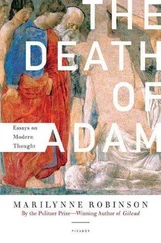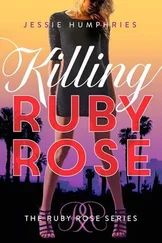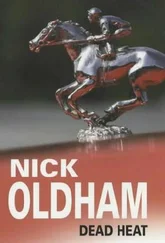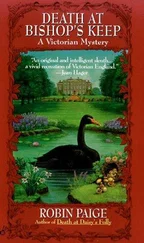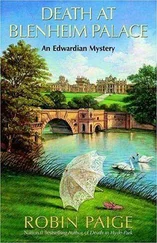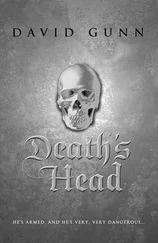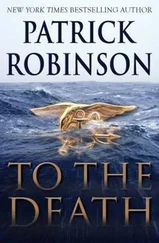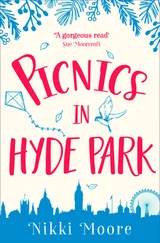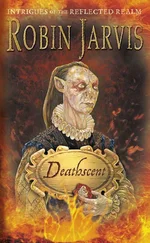Robin Paige - Death in Hyde Park
Здесь есть возможность читать онлайн «Robin Paige - Death in Hyde Park» весь текст электронной книги совершенно бесплатно (целиком полную версию без сокращений). В некоторых случаях можно слушать аудио, скачать через торрент в формате fb2 и присутствует краткое содержание. Жанр: Классический детектив, на английском языке. Описание произведения, (предисловие) а так же отзывы посетителей доступны на портале библиотеки ЛибКат.
- Название:Death in Hyde Park
- Автор:
- Жанр:
- Год:неизвестен
- ISBN:нет данных
- Рейтинг книги:5 / 5. Голосов: 1
-
Избранное:Добавить в избранное
- Отзывы:
-
Ваша оценка:
- 100
- 1
- 2
- 3
- 4
- 5
Death in Hyde Park: краткое содержание, описание и аннотация
Предлагаем к чтению аннотацию, описание, краткое содержание или предисловие (зависит от того, что написал сам автор книги «Death in Hyde Park»). Если вы не нашли необходимую информацию о книге — напишите в комментариях, мы постараемся отыскать её.
Death in Hyde Park — читать онлайн бесплатно полную книгу (весь текст) целиком
Ниже представлен текст книги, разбитый по страницам. Система сохранения места последней прочитанной страницы, позволяет с удобством читать онлайн бесплатно книгу «Death in Hyde Park», без необходимости каждый раз заново искать на чём Вы остановились. Поставьте закладку, и сможете в любой момент перейти на страницу, на которой закончили чтение.
Интервал:
Закладка:
“Yes.”
“It is mostly likely the print of the person who placed the bottle under the bed, isn’t it?”
“I suppose so,” the sergeant said. “Yes, sir.”
“And whose print is it?”
“I don’t know, sir. I did not remove the label to see the entire print.”
“You didn’t?” Savidge arched his eyebrows. “And why didn’t you remove the label?”
The sergeant dropped his glance. “I was instructed not to do so,” he said in a low voice.
Savidge leaned forward. “You were instructed not to do so. By whom, Sergeant?”
“By… by Inspector Ashcraft, sir.”
“By Inspector Ashcraft?” Savidge frowned. “I must say, I find that puzzling, since one might imagine that the inspector would be anxious to learn whatever can be learned from the fingerprints on the bottles. However, we will leave that for the moment.” He turned to the bench. “With your lordship’s permission, I should like to ask Sergeant Collins to remove the label, study the fingerprint, and tell us, if he can, the identity of its maker.”
Sims jumped angrily to his feet. “Objection! This is pure theatrical show, my lord. And most irregular.”
The judge sighed. “Theatrical, yes. Irregular, perhaps. However, I see no reason why the fingerprint evidence should not be obtained, since it seems to be germane to the question of who handled the bottle. The defense may proceed.”
Sulkily, Sims dropped back into his chair. Sergeant Collins left the witness box and went to the table where the exhibits were displayed. With a thin-bladed knife, he lifted the edge of the label and peeled it off. Taking a fingerprint kit out of his pocket, he dusted the print with a black powder, revealing it to be continuous under the label. Savidge handed him a magnifying glass.
“Now, Sergeant Collins,” he said, “please study the print, and tell us anything you can about it.”
Collins bent to the task. After a few moments, he straightened. “I would say that it is a right thumbprint. It is of a class we call a right loop. The ridges all tend to the right and close at the top, you see.”
“I see. Well, then. Would you compare that print to Exhibits E1, E2, and E3-the fingerprints of the defendants, which were entered in evidence a few moments ago-and tell the jury whether it belongs to one of the men in the dock.”
The spectators stirred restlessly while Sergeant Collins compared the card in his hand to the print on the bottle. At last, he looked up. “It does not belong to any of the defendants. I can say that definitely.”
“I see.” Savidge went back to the table and picked up another card. “Do you recognize this, Sergeant?” he asked, handing it to the witness. “If so, please identify it.”
“It is a card used by Scotland Yard to register the fingerprints of all of the Yard’s officers, for the purposes of excluding them.”
“Very good. Please note,” Savidge said to the jury, “that one side of the card contains ten fingerprints. The individual’s name is on the other side of the card.” To the clerk, he said. “Enter the card, please, as Exhibit F.” He returned to the witness. “Now, then, Sergeant, I should like you to examine the right thumb print on this card and compare it to the one you just obtained from the bottle. Please do not turn the card over. You are not to see the name.”
The process took several minutes. Intent on his work and oblivious to the stirrings and whisperings that filled the courtroom, Collins examined the Scotland Yard fingerprint card with a magnifying glass, then returned to the card to which he had transferred the print from the bottle. He repeated the process, then looked up, his brow deeply furrowed.
“Are you ready to tell us what you have learned, Sergeant?” Savidge asked.
“There are sufficient points of comparison to lead me to believe that these prints were made by the same person,” the sergeant said slowly. He explained briefly that points of comparison occurred when certain ridges intersected or touched other ridges, and described six of these points on each of the two prints. “I am working under difficult conditions,” he added. “Once the print is photographed and enlarged, and working with leisure and a microscope, I would likely discover additional points of comparison.”
“We appreciate the difficulties, Sergeant,” Savidge said. “You remain confident, do you not, that these two fingerprints belong to the same individual?”
“I do.”
“Turn the card over, please, and read the name to the jury.”
The spectators watched breathlessly as the sergeant reversed the card, gulped, and turned pale.
The judge leaned forward. “Whose print is it on the bottle, Sergeant?”
“It belongs to Inspector Earnest Ashcraft.”
A loud murmur of voices rippled through the court. The prosecutor leaped to his feet, shouting objections. Ashcraft’s face was curiously mottled. The judge pounded his gavel. “Order,” he commanded. “I will have order in this court!”
“And what do you deduce from this evidence, Sergeant Collins?” Savidge asked, above the noise. The judge pounded his gavel again, and the spectators subsided.
“That Inspector Ashcraft handled the bottle at some point before Detective Finney applied the label.”
“My lord, I object!” Sims cried, quite beside himself. “I most strenuously object! We have no assurance that the fingerprints on the card are those of Inspector Ashcraft. The card might have been substituted for or otherwise tampered with. It might-”
“If your lordship pleases,” Savidge interjected smoothly, “Inspector Ashcraft might be asked to supply his right thumbprint, to ensure that there has been no tampering.”
“I please,” the judge said crisply. “I most certainly do please. Inspector Ashcraft, your thumb, if you will.”
“But my lord,” Sims said in a pleading tone, “this is most irregular. It smacks of-”
“Sit down, Mr. Sims,” the judge said with a dark look. “The Court intends to get to the bottom of this matter. Inspector Ashcraft, if you please.”
Sullenly and with obvious reluctance, Inspector Ashcraft came forward. Sergeant Collins produced a fingerprint kit, opened the inkpad, and rolled the inspector’s right thumb, then printed it onto a card. Having examined it, he said, “It is the same print as that on both the bottle and the card.”
“Recall Inspector Ashcraft,” Savidge said promptly. Sims opened and shut his mouth several times, then sat down.
Sergeant Collins, his eyes averted from the inspector’s angry glance, left the witness box, and Inspector Ashcraft resumed it.
“Now, Inspector,” Savidge said. “You testified earlier that you did not handle any of the evidence in this case. Please explain to the jury how your thumbprint came to be found on the bottle in Mr. Gould’s room. Did you put that bottle there, so that Detective Finney could later find it?”
Charles saw that Ashcraft’s jaw muscles were working. “I must do my work as I see my duty,” he said. “I would deal with the devil himself, when it comes to that.”
The judge fixed cold eyes on the inspector. “Answer the question, Inspector. Did you put that bottle there?”
The inspector cleared his throat. “I claim privilege against self-incrimination,” he said in a surly tone.
The courtroom became suddenly noisy again, and again the judge gaveled it into silence. “Order!” he commanded. “There will be order in this courtroom!”
“Very well.” Savidge leaned forward. “Inspector Ashcraft, if you are not willing to speak, at least you may be able to hold up your right hand.”
Frowning, Ashcraft held it up.
“I see, sir,” Savidge said, “a faded yellow stain on your index finger, around where the skin appears to have peeled away. Mr. Baker told the jury that a nitric acid burn turns the skin yellow and causes it to peel. Did you burn your finger when you poured nitric acid into one of the bottles found by Detective Finney in the defendants’ rooms?”
Читать дальшеИнтервал:
Закладка:
Похожие книги на «Death in Hyde Park»
Представляем Вашему вниманию похожие книги на «Death in Hyde Park» списком для выбора. Мы отобрали схожую по названию и смыслу литературу в надежде предоставить читателям больше вариантов отыскать новые, интересные, ещё непрочитанные произведения.
Обсуждение, отзывы о книге «Death in Hyde Park» и просто собственные мнения читателей. Оставьте ваши комментарии, напишите, что Вы думаете о произведении, его смысле или главных героях. Укажите что конкретно понравилось, а что нет, и почему Вы так считаете.
